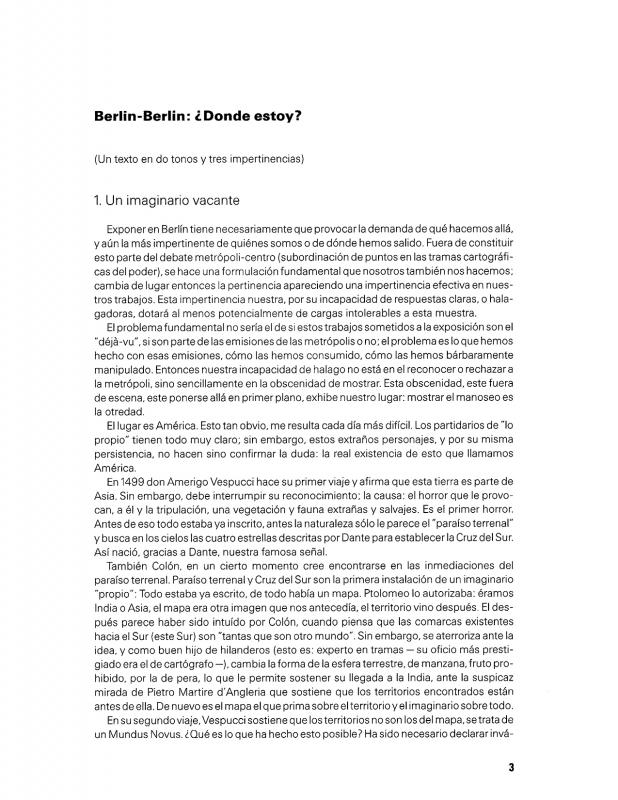This is the introductory text for the last of the three catalogues produced for Chile: 100 años de artes visuales (Chile: 100 Years of Visual Arts) organized by the Museo Nacional de Bellas Artes, Santiago, Chile, the trilogy of exhibitions that, among other things, prompted discussion on the role of the curator and launched a critical revisionism of the hegemonic narratives of the history of Chilean art. All of that is explicitly covered in Justo Pastor Mellado’s curatorship of the final exhibition 1973–2000: Transferencia y densidad (October 19 to December 31, 2000), presented in eight rooms: Historias de Anticipación, Historias de Cuerpos, Historias de Manchas, Historias de Disposición, Historias de Localización, Historias de Identificación, La Cita de la Historia, and Historias de Recolección. The exhibition’s major proposal (“the curator as producer of infrastructure: analytical documents, archives, presentation of primary sources, milestones, and omitted documents”) is a vital contribution to the critical revision of the history of Chilean art. Specifically, it is a useful introduction to the forms it takes and to the country’s particular art system. Mellado’s goal is to demythologize and rectify certain narratives concerning its origins, during a recent and particularly complex period (at a political, social, and cultural level).
[For a complementary view on one of the references mentioned above, specifically the concept of the 1960s as a precursor, see the ICAA Digital Archive “Berlín, Berlín, ¿dónde estoy?” (doc. no. 736090) by Francisco Brugnoli].

